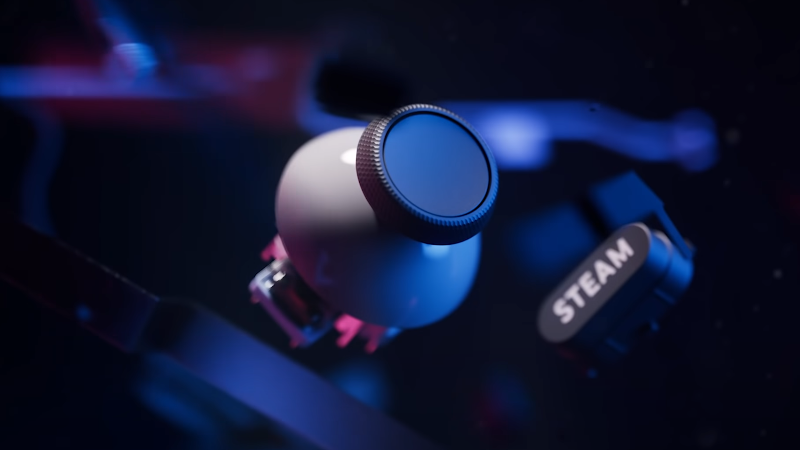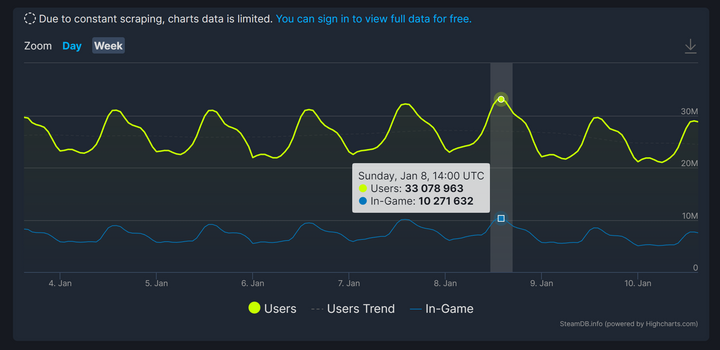You've heard of Liminal spaces, now what about Liminal Operating Systems?
You've heard of Liminal Spaces, right? These non-descript, uncanny places that feel equal parts familiar and nostalgic, while simultaneously seeming alienating and off-putting...

You've heard of Liminal Spaces, right? These non-descript, uncanny places that feel equal parts familiar and nostalgic, while simultaneously seeming alienating and off-putting. Many equate the concept of Liminal Spaces to clipping out of bounds in a video game and landing in an unfinished portion of a level—knowing this is somewhere you probably shouldn’t be and there may not be a way back in bounds.
So you’ve heard of Liminal Spaces, but what about Liminal Operating Systems? That might sound like a meme, but I guarantee you there are some truly uncanny OSes out there.
ReactOS
ReactOS is an operating system out of time. It looks like a holdover of the early Windows NT days—where Microsoft’s approach to user interface design was the simple skeuomorphisms of buttons… for everything.

So it should be no surprise that ReactOS is a free and open source re-implementation of the Windows NT kernel and associated Windows APIs. It’s been in development since 1998 and it’s most recent release is version 0.4.13 alpha.
It’s possible to run many Windows applications on ReactOS and even install hardware drivers—with the goal being to create a fully free and open source, binary-compatible alternative to Windows. And that’s a commendable goal. But probably because of that, there’s something about ReactOS that makes it feel uncanny. Windows is the desktop OS that spies on you and can’t be trusted, after all.

So between the OS providing an incomplete Windows experience, the practically antique—yet still appealing—design of the UI, and the free nature of the system, ReactOS is fittingly the first liminal operating system on this list.
Hannah Montana Linux

Billed by its creator as a way to quote “attract young users to Linux,” Hannah Montana Linux’s cloying, saccharine pink and purple design feels cynical at best and sinister at worst.
Created in 2009 at the height of the Disney Channel original series Hannah Montana—a show about a teenage girl living a double life—this now-ancient Linux distro aimed at pre-teens is woefully out of date and criminally out of touch.
And while the OS itself is off-putting on its own with the cringe-worthy theme and bizarrely composed background featuring a preteen Miley Cyrus and Tux the Penguin on a fuchsia background—the official website for HML might be the most disturbing piece of this puzzle.
Its design, even when it was new, feels like a relic—something akin to a GeoCities homepage from 1995. Yet I can’t tell what’s worse; The fact that it’s hosted on SourceForge of all places or the stilted lyrics to a song about Linux prominently featured on the site without any hint of meter or melody.
Roku

Roku is a streaming box that you connect to your TV which allows you to stream audio and video content from any number of online services. From your favorite YouTubers to Netflix or any number of imitators; Roku is the streaming box for the average person. It’s not meant to be anything flashy or even performant. Yet while it’s by no means the most disturbing “smart TV” OS (we’ll get to that in a second), it certainly is a contender.
From it’s default purple background that hasn’t been meaningfully changed since Roku version 1.0 to the unapologetically simple design that just feels off, to the fact that the OS is spying on your media consumption preferences and serving you with ads; it’s all a little unnerving.
There’s something very strange about the way Roku devices feel that I can’t put my finger on—almost as if using a Roku device were the same as visiting a dying shopping mall.
See, simply put, Roku remotes prominently feature buttons for now-defunct services. It’s akin to seeing decayed neon signs atop darkened, vacant gated off storefronts. These entryways living on as physical testament to unchecked consumerist culture of the late 80’s and early 90’s.
Windows ME

There are few releases of Windows more superfluous or maligned as Windows Millennium Edition. Built on top of the Windows 9X series of operating systems, Windows ME stripped out many of the useful features that made its predecessors so appealing. Things like real mode DOS for example.
Meanwhile, as they were stripping out features, Microsoft was back-porting features found in their NT operating systems. Things like System Recovery that simply didn’t belong in the 9X world.
However, the most unnerving part of Windows ME the surreal, 90’s era skins for Windows Media Player and the OS’s obsession with WMA and WMV media formats made for disconcerting affairs on their own.
But they quickly learned that Windows ME was a failed experiment and unceremoniously discontinued the OS, with the shortest lifespan for support of any Windows release lasting only 3 years.
Red Star OS

Next up, let’s talk about Red Star OS. The official Linux distribution of North Korea. It originally started development in 1998 at the Korea Computing Center with its most recent version being 4.0 released in January of 2019.
It uses KDE 3 as its desktop and comes fully localized in Korean, using North Korean spellings and terminology.
Red Star also behaves in rather unsettling ways, reflecting the North Korean government’s totalitarian ambition of running a panopticon into the private lives of every North Korean citizen.
From offering a modified version of Firefox which provides its users with access to the national intranet of the North Korean regime to a system daemon which watermarks all files on detachable storage so that the government can track underground markets of foreign films and other media.
Red Star OS is a fascinating and disturbing look into the closed-off and isolated world of the North Korean people. The fact that it utilizes such an outdated release of KDE is uncanny in and of itself, but then knowing that the OS modifies all your files without your consent—that’s pretty off-putting.
Samsung Smart TV OS

There are few Operating Systems in this world that qualify as liminal quite as strongly as Samsung’s Smart TV OS.
Taking cues from virtually every other operating system’s user interfaces, Samsung’s Smart TV OS is a mash-up of paradigms that most strongly resemble that of a PlayStation 4 mixed with Android TV.
And while that might seem like it would make for an at-best middle-of-the-road experience, the amateurish execution results in a user interface that—at a glance—appears fine, but ultimately leaves the user lost, confused, and angry.
Samsung’s offering here is as liminal as a UI can get—with familiar elements that are combined in a way that make little sense and hold up to no intelligent scrutiny. Samsung’s Smart TV OS is akin to the ambiguous dream-like ramblings of AI art. Where you provide a sentence like “Bob Ross painting a football game” and the AI returns this:

That’s how I assume Samsung’s nonsensical Smart TV OS was designed—by some non-human artificial intelligence that is incapable of grasping concepts at anything deeper than a surface level.
TempleOS
TempleOS was created by a man suffering from mental illness. I’m in no way making light of Temple OS's creator... nor am I trying to mock his mental illness by including this here. That being said:

The fact is that Temple OS—even when divorced from the story of its creator—has all the hallmarks of a liminal operating system.
The bizarrely flashing elements, the incessantly scrolling marquees, the garish color pallet, the lack of networking capabilities, the included software demos including games with unparsable rules.

The fact is that this was obviously an enormous amount of work—and the results are both impressive and unnerving.
TempleOS feels as though you've stumbled upon an elaborate tableau of twisted steel deep in the dark, lonesome woods—obviously crafted by human hands, but for what arcane purpose you're unable to discern. Where did it come from? Who built it? And—most chillingly—why?
If you can’t tell this article is a bit of a meme. But hopefully you enjoyed it! If you want more content like this, make sure you become a subscriber! We have massive plans for 2022, and I can’t wait to share all this with you!




Comments ()